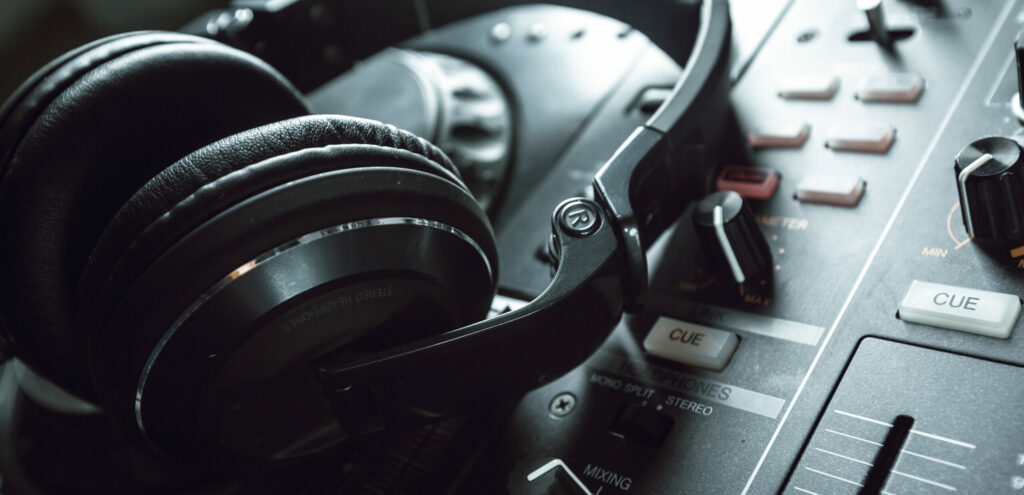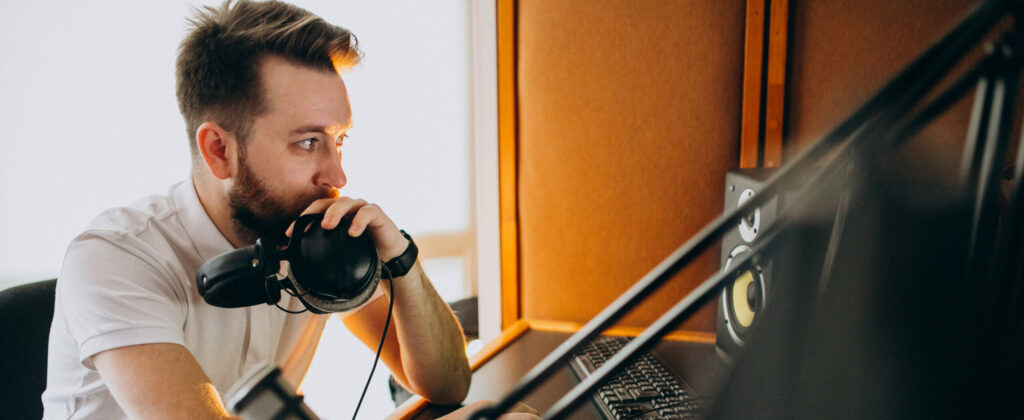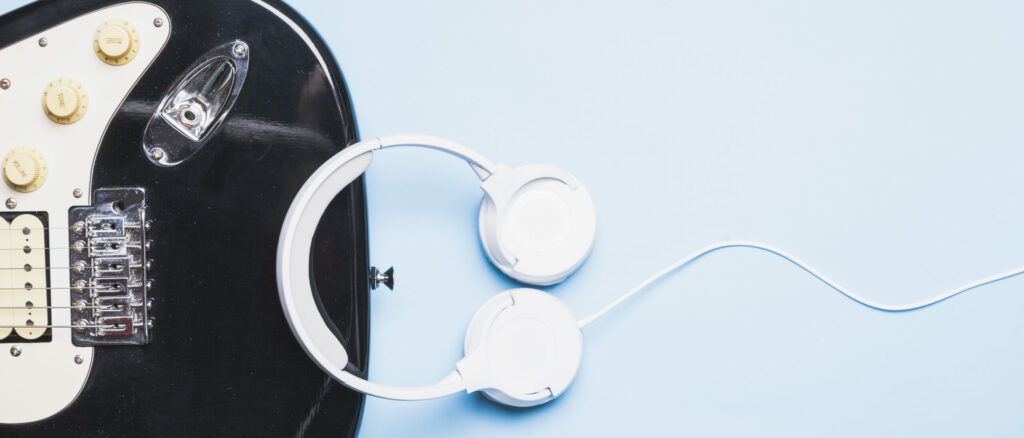In recent years, music producers and audio engineers have increasingly popularized mixing with headphones. This trend is driven by the convenience, affordability, and accessibility that headphones offer, enabling mixing sessions to occur in various environments without the need for expensive studio monitors. However, mixing audio on headphones presents unique challenges that differ significantly from traditional methods. This comprehensive guide will explore the key challenges and solutions for effective headphone audio mixing, provide a detailed comparison of headphone types, and delve into the future of mixing technology. By the end, you’ll have valuable insights and strategies for producing high-quality mixes using headphones.
Table of Contents
- The Unique Experience of Mixing with Headphones
- Common Challenges when Mixing with Headphones
- Best Practices for Effective Mixing with Headphones
- Technical Tools to Enhance Mixing with Headphones
- Mixing with Headphones: Is it for Everybody?
- Headphone Types: Open Back vs. Closed Back
- Future of Headphone Mixing
- Conclusion
The Unique Experience of Mixing with Headphones
Headphone audio mixing refers to the process of mixing music or audio content specifically on headphones rather than studio monitors. The rise of headphone mixing has been fueled by the increasing prevalence of home studios and mobile production setups, where the ability to mix on the go is essential. Unlike studio monitors, headphones provide a highly detailed, isolated listening experience, making it easier to focus on intricate audio elements. However, this isolation also presents distinct differences in stereo imaging and spatial perception compared to mixing on speakers.
The Rise of Headphone Mixing
With the growth of home studio setups and mobile audio production, more engineers and producers are turning to headphones for mixing. They offer a portable, affordable solution that doesn’t require a treated acoustic environment, making mixing with headphones a popular choice for those working in less-than-ideal acoustic spaces. Despite these advantages, headphone mixing still presents challenges in achieving an accurate representation of the mix.

Differences Between Headphone and Monitor Mixing
The primary difference between headphones and studio monitors lies in the way they deliver sound. Headphones isolate sound to each ear, creating an exaggerated sense of stereo width, whereas monitors allow sound waves to blend naturally within a room. This difference can lead to inaccurate stereo imaging when mixing on headphones, as the mix may sound wider and more spacious than it actually is. Additionally, headphones often have varying frequency responses, which can impact the accuracy of bass and high-frequency perception during mixing.
Common Challenges when Mixing with Headphones
Mixing on headphones brings several challenges that can affect the quality and accuracy of the final mix. Understanding these challenges is crucial for any audio engineer or producer aiming for professional results.
Stereo Imaging and Spatial Representation Mixing
One of the biggest challenges in headphone audio mixing is achieving accurate stereo imaging and spatial representation. Headphones tend to exaggerate stereo width, making it difficult to judge the true positioning of sounds within the mix. When listening on speakers, sound waves from the left and right channels blend together, creating a cohesive image of the stereo field. However, with headphones, each ear receives sound independently, leading to a more isolated perception of each channel. This can result in mixes that feel disconnected or overly wide when played back on other systems.
Headphone Frequency Response and Bass Perception
Another significant challenge in headphone mixing is dealing with frequency response and bass perception. Headphones vary widely in their frequency response, with some models emphasizing bass or treble frequencies. This variation can cause engineers to misjudge the balance of frequencies in their mixes, particularly in the low end. Unlike studio monitors, which are often calibrated for a flat response, headphones may lack the accurate bass representation needed for precise mixing. This makes it difficult to achieve a mix that translates well across different playback systems.
Headphone Ear Fatigue
Prolonged headphone use can lead to ear fatigue, which affects the listener’s ability to make accurate mixing decisions. Ear fatigue is especially common in headphone mixing, where the close proximity of sound can intensify the experience and lead to quicker auditory exhaustion. This can result in poor decision-making, such as over-boosting certain frequencies or failing to identify subtle mix issues. Taking breaks and managing session lengths are essential for reducing ear fatigue and maintaining objectivity in the mixing process.
Best Practices for Effective Mixing with Headphones
Despite the challenges, several strategies and best practices can help engineers achieve professional results. By following these solutions, mixers can improve the accuracy and translation of their headphone mixes.
Selecting the Right Headphones
Choosing the right headphones is the first step in achieving a reliable headphone audio mixing setup. It’s essential to choose studio headphones with a flat frequency response to ensure that the mix translates accurately across different playback systems. Studio-grade headphones, such as open-back models, are often preferred for mixing due to their natural soundstage and accurate frequency representation. Investing in high-quality headphones tailored for mixing can make a significant difference in the overall accuracy of the mix.
Utilizing Reference Tracks for Mixing
Using reference tracks is a valuable technique for maintaining a balanced mix. Reference tracks provide a benchmark for frequency balance, stereo width, and overall tonal quality, helping mixers make more informed decisions. By comparing their mix to a well-mixed reference, engineers can identify any tonal imbalances or discrepancies in their headphone mixing. This practice is particularly useful for ensuring that the mix translates well to other listening environments.

Implementing Crossfeed Plugins
Crossfeed plugins are useful tools for improving spatial accuracy in headphone audio mixing. These plugins simulate the natural blending of sound that occurs when listening on speakers, providing a more realistic representation of the stereo field. By introducing slight crosstalk between the left and right channels, crossfeed plugins reduce the exaggerated stereo effect that can occur on headphones, making it easier to judge the placement of elements within the mix.
Taking Regular Breaks
To combat ear fatigue, it’s essential to take regular breaks during mixing sessions. This practice allows the ears to rest and helps maintain a fresh perspective on the mix. Even short breaks can greatly improve the accuracy of mixing decisions, as they help counteract the quick onset of fatigue. By taking breaks, mixers can ensure they maintain objective and accurate judgment throughout the session.
Technical Tools to Enhance Mixing with Headphones
In addition to best practices, several technical tools and software are available that can aid in achieving accurate headphone mixes. These tools are designed to address the unique challenges of headphone audio mixing and provide a more reliable mixing experience.
Room Emulation Software
Room emulation software simulates the acoustics of a professional mixing environment, providing a more natural listening experience for headphone mixing. These programs replicate the sound of studio monitors in a treated room, allowing engineers to mix as if they were using speakers. By using room emulation software, mixers can achieve a more balanced and accurate mix that translates well across different playback systems.
Headphone Calibration Tools
Headphone calibration tools correct the frequency response of headphones to provide a flatter, more accurate listening experience. These tools analyze the frequency response of specific headphone models and apply corrective EQ settings to achieve a neutral response. With calibration tools, mixers can minimize their headphones’ frequency biases, ensuring balanced and accurate mixes.
Mixing with Headphones: Is it for Everybody?
To analyze the viability of headphone audio mixing, it’s helpful to look at case studies of successful mixes that were completed primarily using headphones. These examples showcase the potential of headphone mixing and offer inspiration for engineers looking to achieve professional results.
Independent Artists
Many independent artists have found success with headphone mixing, particularly in home studio setups where access to high-quality monitors may be limited. By carefully selecting headphones, using reference tracks, and employing best practices, these artists have produced mixes that compete with industry standards. This highlights the potential of mixing with headphones as a viable option for independent music production.
Professional Headphones for Audio Engineers
Some professional engineers also incorporate headphone mixing into their workflows, either as a supplementary tool or as a primary mixing method in specific situations. For instance, engineers working in mobile or remote environments often rely on headphones to achieve accurate mixes. These professionals demonstrate that, with the right techniques and tools, headphone mixing can produce excellent results that translate well across different listening environments.
Headphone Types: Open Back vs. Closed Back
Different headphone designs can significantly impact how you perceive sound, affecting your mixing decisions. Here’s a detailed comparison of the most common types used in mixing:
Open-Back Headphones
Open-back headphones have ear cups that allow air and sound to pass through to the outside environment. This design provides a more natural and spacious soundstage, closely mimicking the experience of listening to speakers in a room.

Advantages:
- Natural Soundstage: Better representation of spatial cues and stereo imaging.
- Reduced Ear Fatigue: Airflow prevents pressure build-up, making them more comfortable for long sessions.
- Accurate Frequency Response: Typically offers a flatter response, ideal for critical listening.
Disadvantages:
- Sound Leakage: Sound escapes the headphones, which can be problematic in noisy environments or when recording.
- Less Isolation: External noises can interfere with your listening experience.
Closed-Back Headphones
Closed-back headphones have sealed ear cups that prevent sound from leaking in or out. They provide excellent isolation, making them suitable for use in noisy environments or during recording sessions where bleed is an issue.
Advantages:
- Isolation: Blocks external noise, allowing for focused listening.
- No Sound Leakage: Prevents audio from escaping, which is essential when recording vocals or instruments nearby.
Disadvantages:
- Narrower Soundstage: Can produce a more confined stereo image.
- Increased Ear Fatigue: Lack of airflow can lead to discomfort over long periods.
- Bass Build-Up: May exaggerate bass frequencies due to the enclosed design.
In-Ear Audio Monitors (IEMs)
In-Ear Monitors are earbuds designed to fit snugly within the ear canal, often used by live performers on stage. In recent years, IEMs have gained popularity among mixers for their portability and noise isolation.
Advantages:
- Portability: Extremely compact, making them ideal for mobile mixing setups.
- Excellent Isolation: Provides significant noise blocking, useful in loud environments.
- Customizable Fit: Custom-molded IEMs offer comfort and consistent sound delivery.
Disadvantages:
- Limited Soundstage: Due to their placement in the ear canal, IEMs may not provide an accurate stereo image.
- Frequency Response Variability: Can vary widely between models, with some lacking in bass or treble response.
- Ear Fatigue: Prolonged use can be uncomfortable and lead to quicker ear fatigue.
Future of Headphone Mixing
As technology continues to advance, the future of headphone mixing looks promising. Emerging technologies aim to bridge the gap between headphones and monitor mixing, offering even more accurate and immersive experiences for engineers and producers.
Mixing with Headphones Advancements
Innovations in design and audio processing are enhancing the capabilities of headphone mixing. Developments such as:
- Spatial Audio Processing: Advanced algorithms that provide three-dimensional sound localization, improving spatial accuracy.
- High-Resolution Audio: Support for higher bitrates and frequencies, offering greater detail and dynamic range.
- Adaptive Noise Cancellation: Intelligent systems that adjust to the environment, providing consistent isolation and sound quality.
These advancements contribute to more accurate monitoring and can help overcome traditional limitations associated with mixing on headphones.
Virtual Reality and Mixing
Virtual Reality (VR) technology is making its way into the audio production realm, offering new possibilities for immersive mixing experiences. VR allows engineers to:
- Simulate Real Mixing Environments: Create virtual studios with customizable acoustics and speaker setups.
- Interact with 3D Audio Objects: Manipulate sound sources in a three-dimensional space for more intuitive mixing.
- Collaborate Remotely: Work with other professionals in shared virtual spaces, regardless of physical location.
By integrating VR into headphone mixing, engineers can experience a more realistic environment, potentially matching or even surpassing traditional studio setups.
Artificial Intelligence in Headphone Mixing
Artificial Intelligence (AI) is increasingly being applied to audio production. AI-driven tools can assist in:
- Automated Mixing: Suggesting optimal levels, EQ settings, and effects based on analysis of the audio content.
- Personalized Monitoring: Adapting headphone output to individual hearing profiles for more accurate monitoring.
- Error Detection: Identifying potential issues in a mix, such as phase problems or frequency imbalances.
AI has the potential to streamline the mixing process and help engineers achieve better results, particularly when working with headphones.

Conclusion
While mixing with headphones presents unique challenges, effective solutions and best practices can help engineers achieve high-quality results. By selecting the right headphones, utilizing reference tracks, implementing crossfeed plugins, taking regular breaks, and using technical tools like room emulation and calibration software, mixers can overcome the limitations of headphone mixing and create professional-sounding mixes.
Furthermore, advancements in technology and the integration of virtual reality are set to revolutionize the way we approach headphone mixing. These innovations promise to bridge the gap between headphones and monitor mixing, offering more accurate and immersive experiences.
Whether working in a home studio or a mobile setup, following these guidelines ensures that mixes are balanced, accurate, and ready for various playback systems. With the proper approach and the exciting future of headphone technology, mixing with headphones can be a powerful tool for today’s audio engineers and producers.
About the Author

Néstor Rausell
Singer, Musician and Content Marketing SpecialistNéstor Rausell is the Lead Singer of the Rock band "Néstor Rausell y Los Impostores". Working at MasteringBOX as a Marketing Specialist
Leave a comment
Log in to comment

